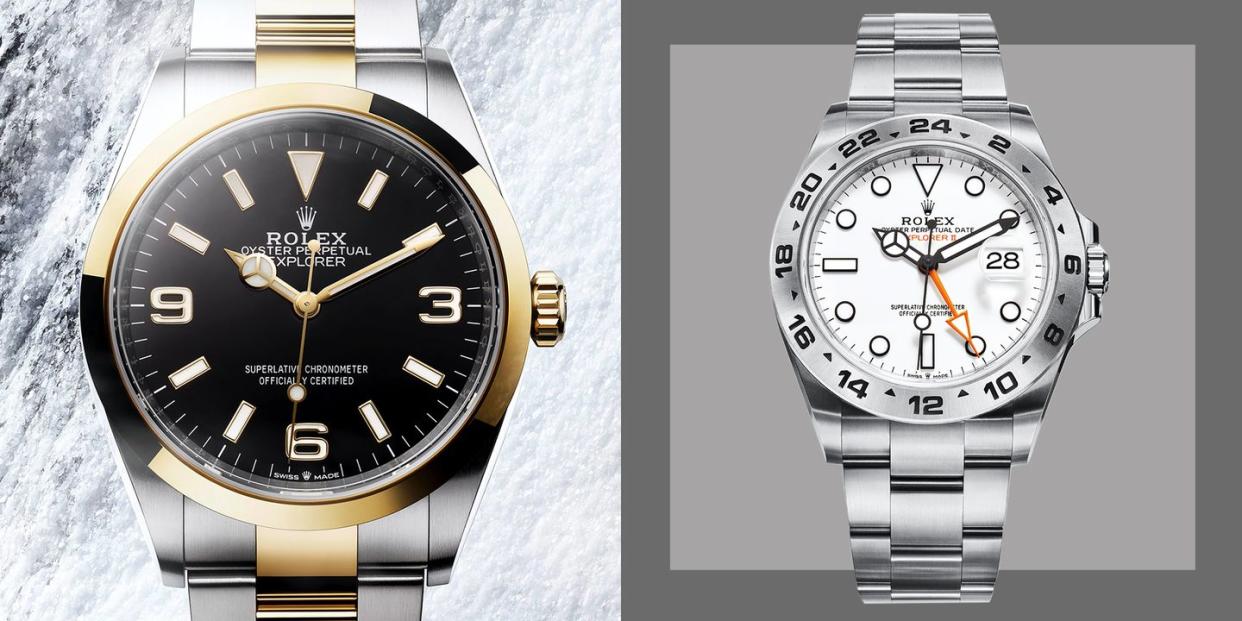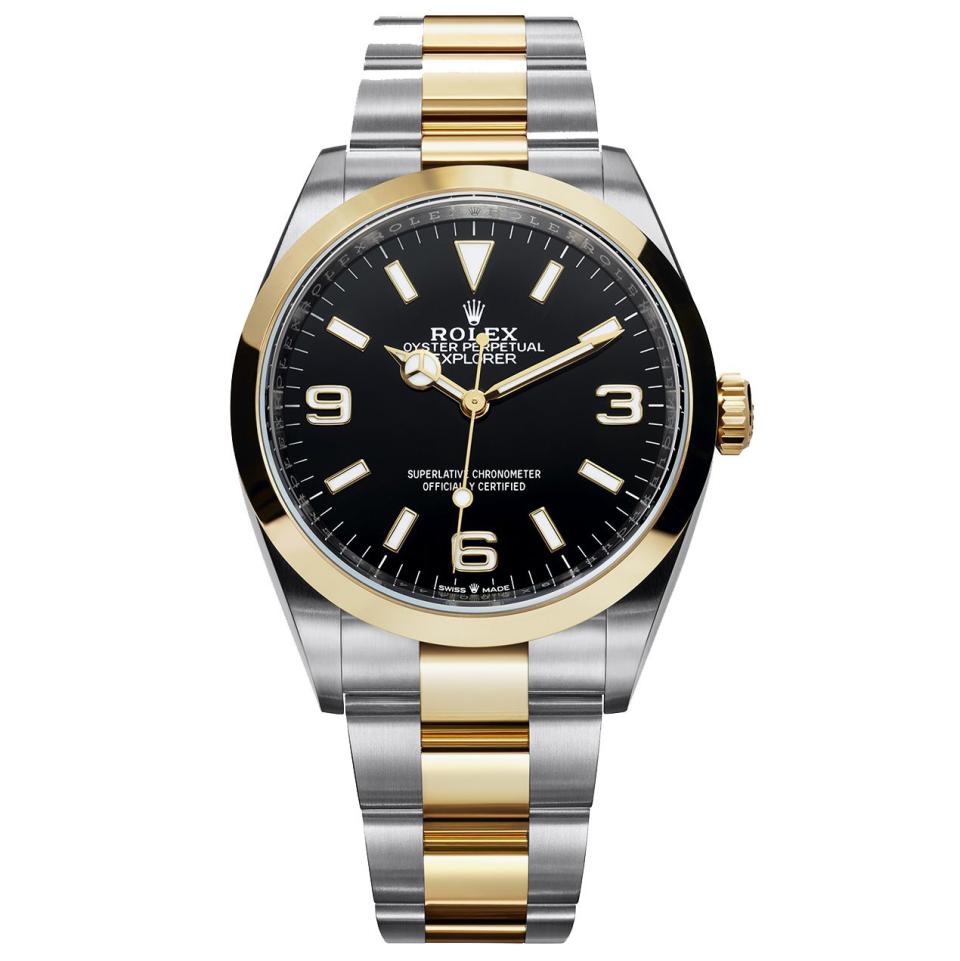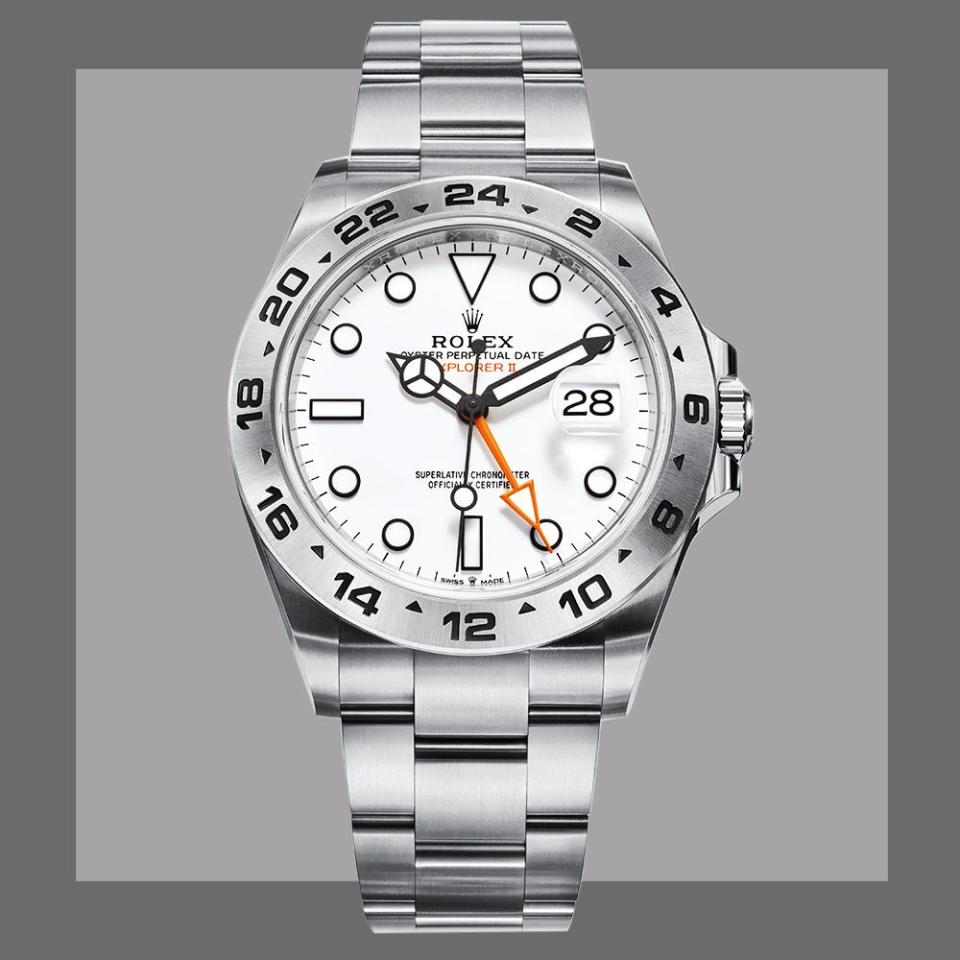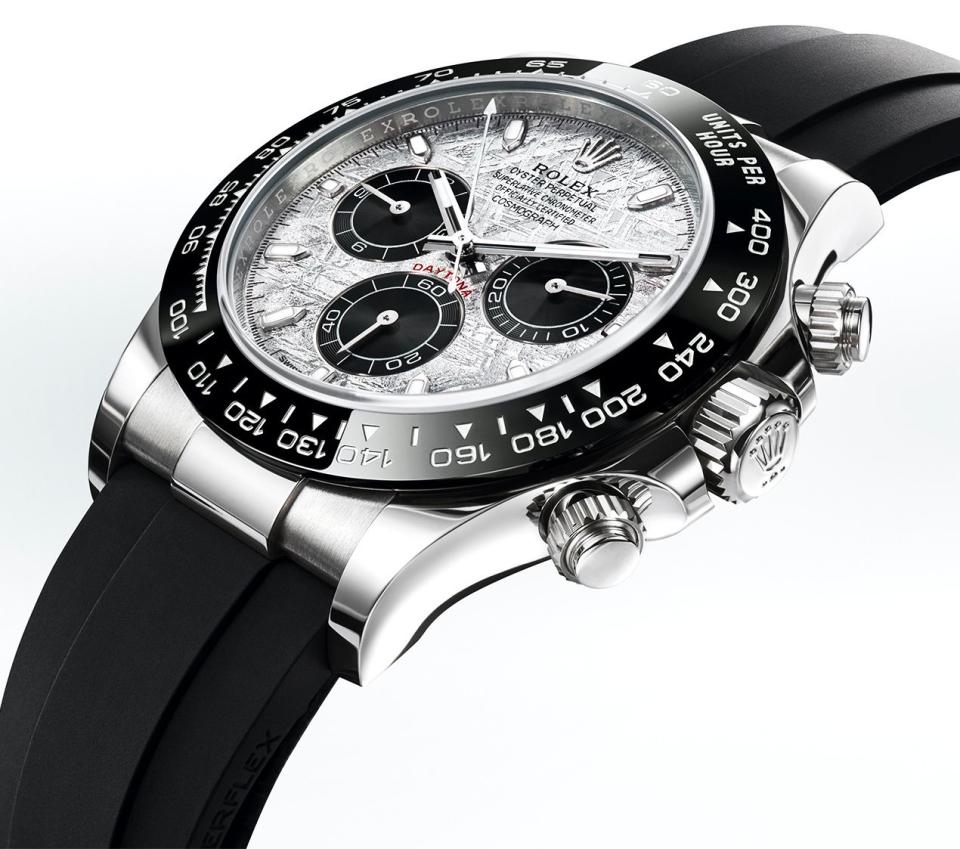Rolex Just Updated Three of Its Most Iconic Watches

Welcome to Dialed In, Esquire's column bringing you horological happenings and the most essential news from the watch world since March 2020.
The unveiling of any new update by Rolex is always major news. Such is the devotion to the brand, the most famous brand in watchmaking, that even changes to its iconic watches that are barely visible to the naked eye can send shockwaves and spark conversation around the world in minutes. It’s a testament, of course, to the affection—not to say obsession—with which watch fans view the 116-year old brand. To Rolex, no change is ever made just for the sake of it; rather it’s how the brand seeks to improve or update its offer without eroding the iconic status of its many pillars.
The Rolex Explorer is, if anything, the OG of Rolex pillars. It lies at the root of every professional-grade Rolex because it was the first, launched in 1953. The timing was impeccable, too, just in time to be worn by Sir Edmund Hillary on the first successful summit of Everest, sealing its reputation as the no-nonsense, three-hand performance watch par excellence by which all others would be judged.

The Explorer took on a noticeable new look in the watch unveiled today, for the first time using yellow Rolesor (the house’s proprietary gold) and Oystersteel (its own 904L steel) in the same watch. Even more noticeable, however, was its new size, at 36mm. Although this might seem like a nod to the ongoing trend to smaller watches, the new size has real precedent. With the 39mm Explorer discontinued, the new Explorer returns to the original scale of the actual watch worn by Hillary, which lends an added air of authenticity for those of us inspired by the exploits of a generation of great modern explorers.

The Explorer II, meanwhile, was a bigger, beefier version of that first Explorer, launched in 1971—one that added a GMT function with a 24-hour time scale around the bezel. The orange arrow travelled round the dial at half the speed of the regular hour hand, allowing you to track time in two different zones. Today, Rolex marked the 50th anniversary of that watch and released a new Explorer II with changes that—we’re sure—will please the Rolex nut. The case, still 42mm in diameter, is subtly reshaped in the angles and edges, making for a more seamless transition from bracelet to case. The white dial is also retained but features white gold markings and hands overlaid with a matte black DLC coating to maximize legibility. Light emission uses Chromalight (a form of lume first developed by Rolex in 2008 that glows brighter and longer than regular Luminova), but here uses the latest, brightest version. Under the hood the movement is caliber 3285, a GMT movement that debuted in 2018 in the GMT Master II. Both Explorers are scheduled for retail in May.

Finally, in the "Why ever not?" department, a striking issue of the Daytona—in white, Rolesor (yellow), or Everose (pink) gold—features for the first time a material that is literally out of this world: 0ctahedrite meteorite. Composed of 10 percent nickel and 90 percent iron, it’s a meteorite that cooled particularly slowly during its journey through space, creating a bold crystalline structure. As a material, it’s one of those plain "wow" things often used in watch making. But rarely like this. Where other brands use microscopically thin slices of meteorite laid onto a brass base, Rolex used a solid piece of their space rock.
Explorer in Rolesor and Ostersteel, $10,800, by Rolex; Explorer II in Oystersteel, $8,550, by Rolex; Daytona with meteorite dial in white gold, $34,050, Rolesor, $41,000, and Everose, $43,700.
You Might Also Like

